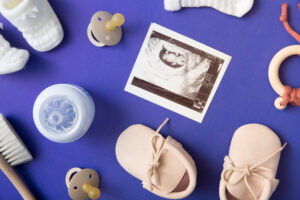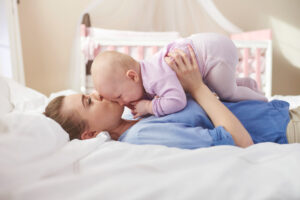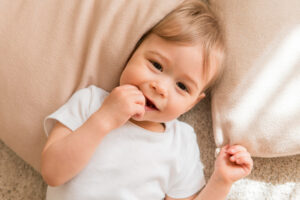Diaper changing your baby can be a messy job. Before you get started, be sure to grab a diaper pail or trash can to contain the mess and germs.
Once you have everything you need, lay your baby on the changing table. Be careful because babies can squirm, and you don’t want to leave them unattended.
Wash Your Hands for Diaper Changing
It’s important to wash your hands before and after diapering your baby. This helps to avoid the spread of germs and reduce the chances of developing a diaper rash or irritation. If you don’t have access to a sink, be sure to use hand sanitizer.
Make sure to keep a supply of wipes and a diaper pail nearby. You may also want to consider bringing a plastic bag for the dirty diaper in case you’re changing your baby in a public bathroom.
Ideally, you should diaper changing your baby in the same spot every time. Doing so will limit the spread of germs and make it easier to remember the steps involved in the process. If you can’t change your baby in the same place each time, be sure to wash your hands and disinfect the changing table before and after each diaper change. This is especially crucial if you care for several babies at once or have young children in your home. It’s also a good idea to keep a record sheet or chart for each child’s diaper changing.
Lay Your Baby on a Diaper Changing Table
Before you start, make sure you have all the materials you need. You’ll want to have a fresh pack of baby wipes on hand (we recommend Mustela’s No Rinse Cleansing Wipes) and a clean changing pad. Wash your hands with soap and water or hand sanitizer before and after you touch your baby.
Next, lay your baby on the changing table. If they’re rolling around, you may need to secure them with a safety strap or buckle on their body. Be sure to always keep one hand on them at all times so they don’t accidentally roll off the table.
Once you have your baby positioned safely, put on the disposable changing gloves and open the clean diaper. Center it on their bottom, then bring the front up between their legs and over their tummy. Pull it tight, but not so tightly that it squeezes their thighs or groin area. You’ll also want to wipe their genital area, if necessary, with a gentle cleanser, like Mustela’s Cleansing Wipes with Avocado. Be sure to wipe from front to back, as scrubbing from behind can cause urinary tract infections.
Place the Diaper on Your Baby
Whether you’re changing your baby on a diapering table or in another convenient place, make sure your infant is comfortable. They’ll likely squirm around and topple over, so it’s important to secure them to something stable (a blanket, a diaper-changing sheet or even your arms) for their own safety as well as your own.
Before placing a new diaper on your baby, wash your hands thoroughly. Once your hands are clean, remove the dirty diaper and fasten the tapes, then set it aside in a trash can that’s lined with a plastic bag to reduce odors.
Center the new diaper over your baby’s bottom, making sure the front is centered underneath their belly button and that the adhesive tabs are level with their navel. Then, spread their legs apart to prevent the diaper from bunching while you fasten it.
With clean wipes, swipe their bottom from front to back to ensure you’re removing any stool left behind in the old diaper. Finally, fasten the diaper’s tabs, but don’t make them too tight. If your baby’s stomach is spilling over the front, a larger size might be needed.
Remove the Diaper from Under Your Baby
Whether your baby is wearing a cloth diaper or you’re using disposables, start by removing the old one. You can do this on a changing table, the floor or anywhere else that’s comfortable. But keep in mind that newborns and babies up to 4 months may roll over, so always diaper changing your baby on a flat surface (not an elevated one) away from anything they could knock over.
Once you’ve removed the dirty diaper, wrap it into a ball and place it to the side out of your baby’s reach. Then dispose of it in your diaper pail, trash can or plastic bag if you’re out and about.
Now, you’re ready to put on a fresh diaper. Before you do, make sure your hands are clean. Then, fasten the tabs on the front of the new diaper across your baby’s hips. You’ll want to adjust them so that they’re snug enough to avoid leakage but not tight. Some parents find that offering their baby a distraction like an interesting toy helps them stay calm during diapering time.
Clean the Area after Diaper Changing
Changing your baby can be messy, but it’s important to clean the area thoroughly. Make sure to use a no-rinse cleansing fluid, a diaper wipe or a cloth washcloth and be careful not to rub the area too hard.
After removing the dirty diaper, place a new one under your baby and fasten it securely. Apply a diaper cream or talcum powder to prevent rash, if needed. If your baby is a boy, make sure the diaper covers his penis to prevent irritation and infection.
Discard the old diaper in a secure trash can and wipe down the changing surface with a disinfectant spray, liquid or wipe. If you’re using a cloth diaper pail, make sure to close it and put a liner in. Wipe down your baby’s legs, too, and be careful not to touch the genital area (girls should always be wiped from front to back to avoid UTIs). Finally, wash your hands and place your child in a safe, supervised area.
More Resources
Here are some external resources from valid organizations about diaper changing.





